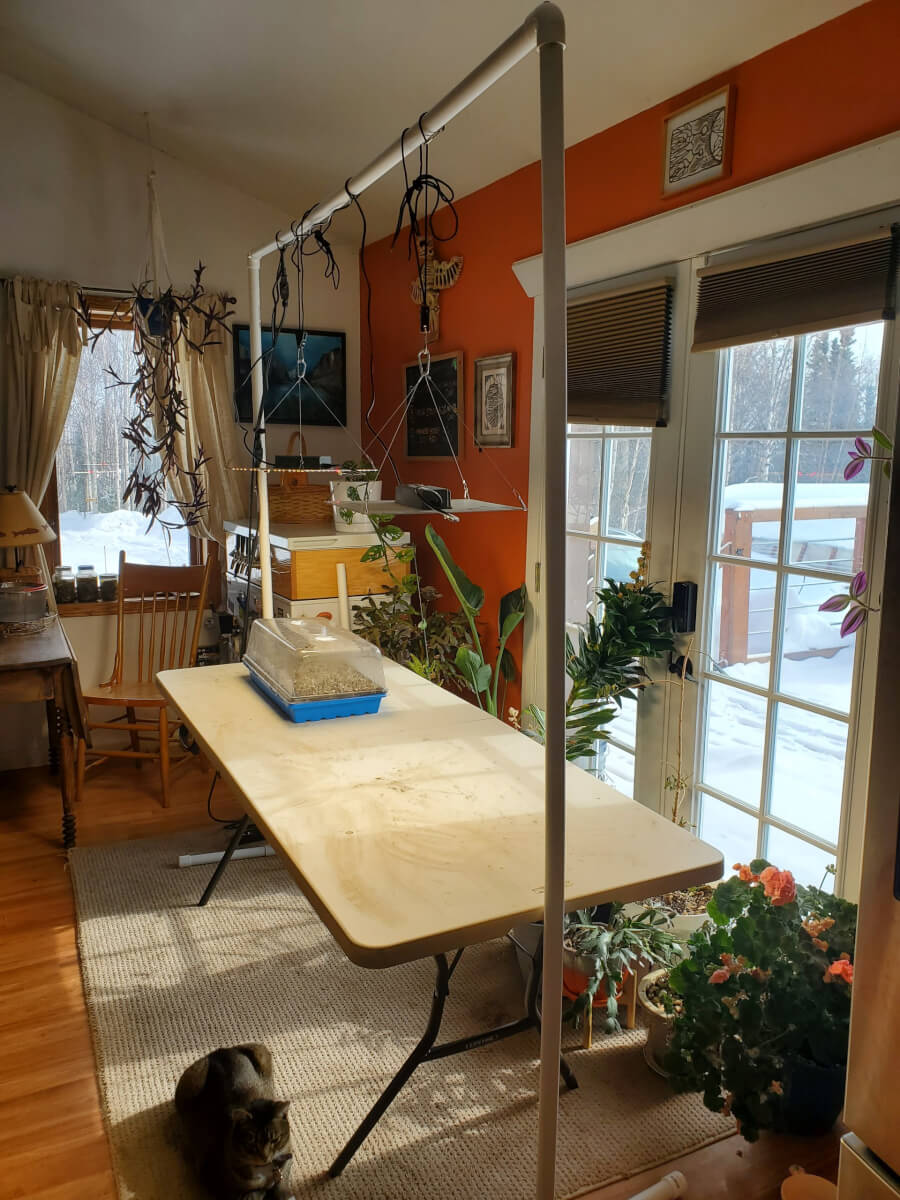Let’s talk a bit about indoor growing space design. You don’t need to get super complicated with it, but there’s some things worth thinking about!
Growing spaces can be more permanent/semi-permanent in nature, such as through the use of a grow tent. They can also be temporary, like setting up temporary tables for the growing season. You might also just use some extra shelving you have in a part of your home. There’s no one “right” way to do it, but we’re going to share some of the things that work for us and help us grow hundreds of our own garden starts!
As for location, the biggest thing we’ll tell you is that ambient air temperatures (and thus soil temperatures) can have a heavy impact on germination. Many types of seeds require higher soil temperatures (like 65-75 Fahrenheit) for germination. If you’re trying to grow in a semi-heated garage, you may face some issues. In this case, you might want to invest into heat mats to help you counter those cooler temperatures. Ideal indoor temperatures range for a growing space should be within 50 and 90 degrees fahrenheit, with ideal being between 65 to 75 degrees.
You can choose a single level design or a multi-level (i.e. shelf based) design. We favor single plane growing spaces for several reasons. It’s easier to observe your plants for issues, it’s much easier to water your plants and when you get to hardening off, shuffling your plants inside and outside is also easier. It also allows for the use of “high power” LED lighting, which helps to create quality, compact garden starts. Plus, if your tall plants get a little unruly, it’s not a big deal at all. We’ve used shelf based systems in the past and think the single plane benefits outweigh any space savings.
Next up, we like to get our plants up off the ground. When your plants are at waist height, they’re just easier to care for. We like to use 2×6 temporary tables and you can fit a metric ton of plants on them. A 2×6 table will fit ten 1020 trays! While 2×4 tables do work, too, you can only use six 1020 trays max. Those extra 2 feet can get you space for 100+ plants and four more 1020 trays, which is well worth it to us!
We talked about indoor grow lighting recently. We like using fewer, higher power lights compared to many, less powerful lights. If you need to get your lights above your plants, we use a very simple and inexpensive PVC based light hanger that allows us to suspend our lights well above our plants. Using PVC, the light hanger can easily be assembled for the growing season, then easily disassembled and stored outside for the winter. While there are commercial light hanging systems, PVC is cheaper and doesn’t care if it’s stored outside in the brutal winter. While PVC might not “look” professional, it gets the job done and our plants are just as happy.
The last thing is some sort of airflow. We usually have one or two fans that blow air across the tops of our plants. This provides a couple of benefits. First, it reduces stagnant air and will reduce opportunity for molds and other disease. Second, the moving air helps strengthen the plant’s stems, just like wind in the outdoors will. This helps your plants develop a sturdy foundation. If you opt to use a grow tent, it might also be wise to consider an exhaust fan. In our tent, we set our tent to exhaust the air when it hits 80 degrees Fahrenheit.
That should cover the basics and what you need to know to put together a space that will grow plants!


